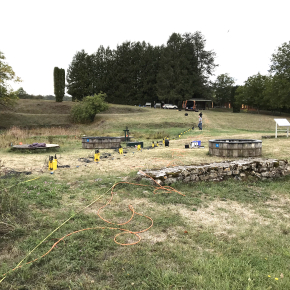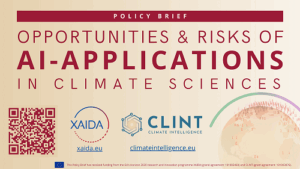Feeding a warmer world
Droughts, fires, floods: for several years now they have been the cause of major losses for farmers and raise the question of the resilience of our food systems. But what are the concrete risks for tomorrow’s agriculture, some of which are already being felt?
For many years, scientists have known that average temperatures are bound to rise as long as greenhouse gas emissions are not reduced. This observation is accompanied by a series of extreme events such as droughts, fires and heat waves which, in addition to the damage they cause, influence the dynamics of an entire system. Philippe Ciais is a researcher at the Laboratory for Climate and Environmental Sciences (LSCE-IPSL), and his team studies carbon absorption by terrestrial ecosystems. Carbon storage by soils and biomass is highly dependent on climate variations. “Extreme years cause large variations in carbon fluxes on a global scale,” he says, “climate change globally attenuates the vegetation capacity to store carbon.” During a drought, the hot, dry air causes the plant to close the pores through which it breathes: the stomata. In this configuration, CO2 is not properly assimilated and photosynthesis cannot take place. This reduces growth, among other things, and mortality can lead to significant releases of CO2 into the atmosphere.
While other effects of climate change weight on the health of trees and large carbon pools such as forests, the impact on human crops is thought of in other terms: “to assess the impact of climate change on cultivated plants, the variable of interest is yield. This is central to knowing the real risks of climate change for agriculture. There is a climatic risk, with conditions reaching potentially dangerous values for yields,” explains the researcher, “but there is also the resilience of agroecosystems, i.e. their capacity to maintain their function in the presence of an extreme event, for instance by adapting cultivation practices.”
A fine balance yet to be found
The current system faces several obstacles to maintain its stability. While most wild plant species are affected by the same types of problems as cultivated species (notably water and heat stress), they are much more susceptible to pests. Moreover, certain climatic hazards are particularly worrying for the harvest of certain species: “If temperatures are too high during flowering, maize for instance won’t form its grain properly afterwards,” adds Philippe Ciais. “Similarly, if it is too dry in autumn when the fields are sown for winter cereals, it affects germination.” These heat episodes can have a tenfold impact when they occur at key moments in the plant’s development. “There was also the extreme rainfall in May 2016, which caused the biggest wheat crop loss ever recorded in France,” recalls Philippe Ciais. This episode resulted in a €4 billion deficit.
These observations lead to a fundamental question: is the current agricultural system resilient enough? To Philippe Ciais, “it is a system that emits a lot of greenhouse gases and is vulnerable to the climate, particularly in the southern countries. The challenge is to try to find production systems that emit less, while being more resilient to extreme events, and that is not so simple.” The potential answers lie in a balance that has yet to be defined: “Drought-resistant varieties have a lower yield, so the idea is really to find an optimum between reducing our impact on the environment, a certain resilience and maintaining food security,” concludes the researcher.
Translated from Marion Barbé for IPSL
To go further
Discover Mozaïka: Did you say extreme?






